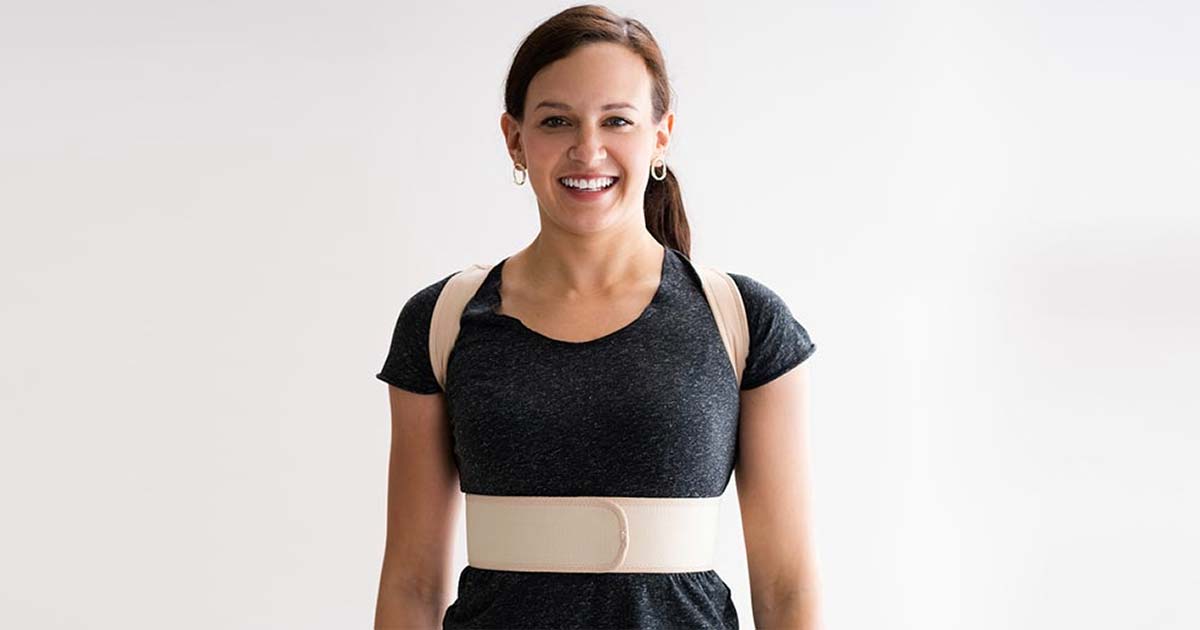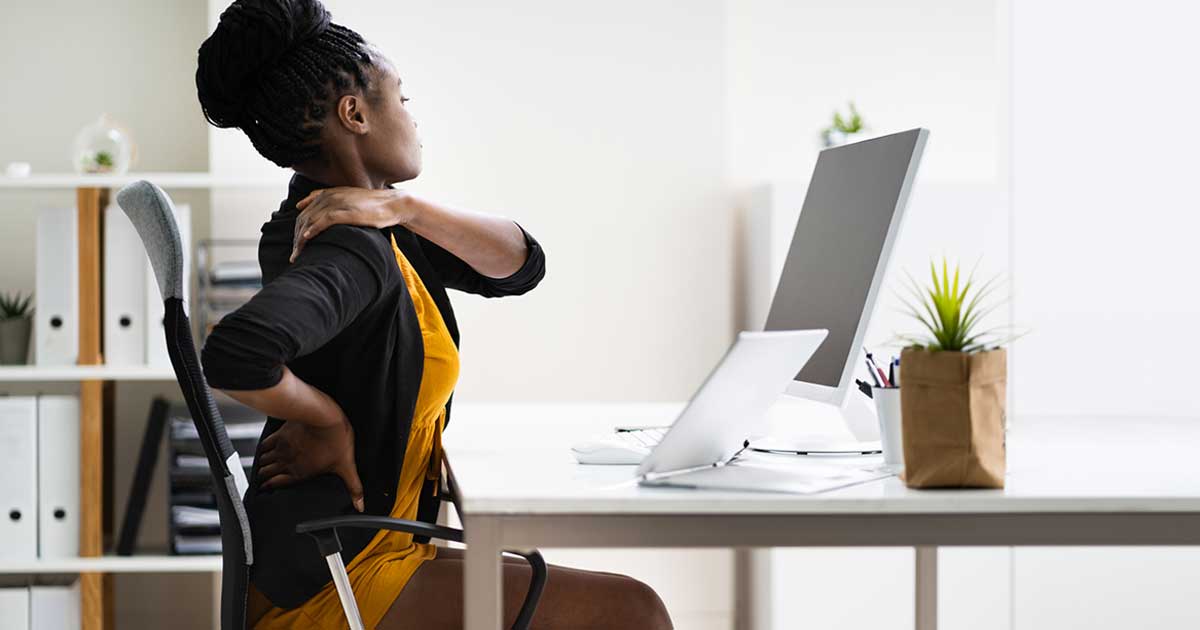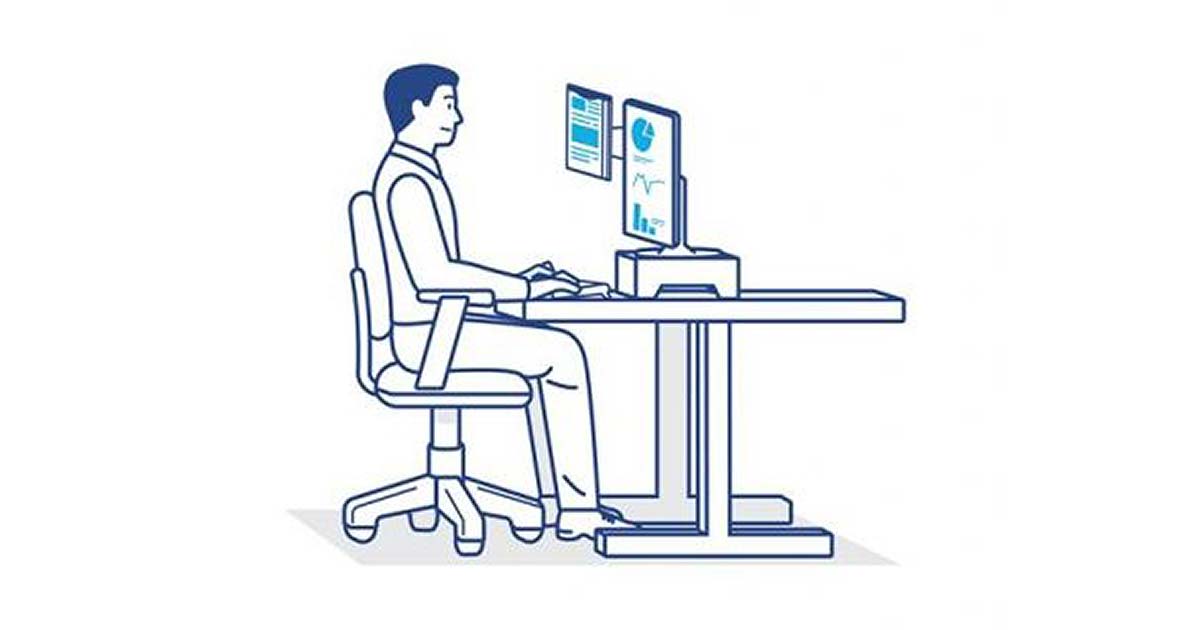
Advice to improve your movement, fitness, and overall health from the world's #1 in orthopedics.
What’s So Bad About Bad Posture? Plus, Exercises That Can Help
Poor posture can cause a host of issues in the body, including muscle strains and breathing issues. Learn more about how to improve bad posture and exercises that can help.
Advice to improve your movement, fitness, and overall health from the world's #1 in orthopedics.

This can be more than just a not-a-good-look. Slouching can take its toll on the body as well. “Poor posture affects your overall musculoskeletal health,” says Christina Rodriguez PT, DPT, OCS, cert. MDT. When your spine is not aligned, it can lead to poor balance, which can throw off your daily functioning. Before long, everyday activities like lifting grocery bags out of your car, walking up and down stairs or playing with your kids can cause injury.
To add to that, when your head falls out of alignment, other muscles – like those in the neck, upper back, shoulders and even lower back – become strained as you distribute the force unevenly through your joints and tissues. This can cause pain in the short-term and possible injury in the long-term, as the muscles work overtime, stretching into positions they’re not meant to be in and compressing other areas meant to be stretched.
Poor posture can also lead to fatigue. Slouching collapses the diaphragm, which blocks the body’s ability to take full breaths in and out and thus robs you of the oxygen you need. It also compresses your abdominal muscles and the organs in the gut, throwing off digestion and sometimes even forcing stomach acid to go in the wrong direction, leading to heartburn and acid reflux.
That’s the bad news. But here’s the good news: There’s a lot you can do to improve your posture.
First and foremost, get up and move. “Our bodies weren’t designed to sit all day, so set a timer at least once an hour to get up and take a walk around the house,” says Rodriguez. Get a drink of water from the kitchen. Walk up and down the stairs. Shake your arms and legs out. Anything to get your muscles moving in ways that are different from just drooping at your desk. Then, every time you sit down, drive your elbows down and back, squeeze your shoulder blades together, and hold for three to five seconds.
Exercises for Better Posture
Whenever you’re seated at your desk, make sure you’re doing it properly. Plant your feet on the floor and adjust your chair height so that your knees are about level with your hips. Bring your belly button in toward your spine. Find your perfect shoulder placement by bringing them all the way back and all the way forward a few times, then releasing until they settle into a comfortable position, making sure they’re relaxed and not up by your ears. Set your computer screen so you can see it while your head is level, chin parallel to the floor and your ears in line with your shoulders. You don’t want your head to drift forward because that creates compression in the neck. “Imagine you’re a marionette doll with a string at the top of your head and someone’s gently pulling up so your neck is slightly elongated,” says Rodriguez.
Throughout the day, try some of these moves that you can do right at your desk to reset the muscles for good posture.
Thoracic Extension
- Plant your feet on the floor and align your back with the back of the chair.
- Clasp your hands and place them behind your head and neck for support, keeping your elbows pointed at the walls (right elbow pointed at the right wall, left elbow pointed at the left wall).
- Lean backward over the back of the chair, squeezing your shoulder blades together until you feel a comfortable stretch.
- Pause for a few seconds or hold a little longer if it feels good.
Seated Rotational Stretch
- Plant your feet on the floor.
- Gently twist your upper body to the right, bringing your left hand to your right knee and your right hand behind you. Your neck should be turned to the right comfortably, eyes gazing over your right shoulder.
- Pause here for 5 seconds, or a little longer if it feels comfortable.
- Gently twist your upper body to the left, bringing your right hand to your left knee and your left hand behind you. Your neck should be turned to the left comfortably, eyes gazing over your left shoulder.
- Pause here for 5 seconds, or a little longer if it feels comfortable.
- Repeat 1 to 2 times.
Goalpost Squeeze
- Plant your feet on the floor.
- Lift your arms up so that your elbows are bent at a 90-degree angle and even with your shoulders (like you’re making a football goalpost with your arms). Your palms should be facing front.
- Relax your shoulders, then pull your elbows backward toward your chair, squeezing your shoulder blades together.
- Repeat for a total of 10 times.
Published 10/29/2021


